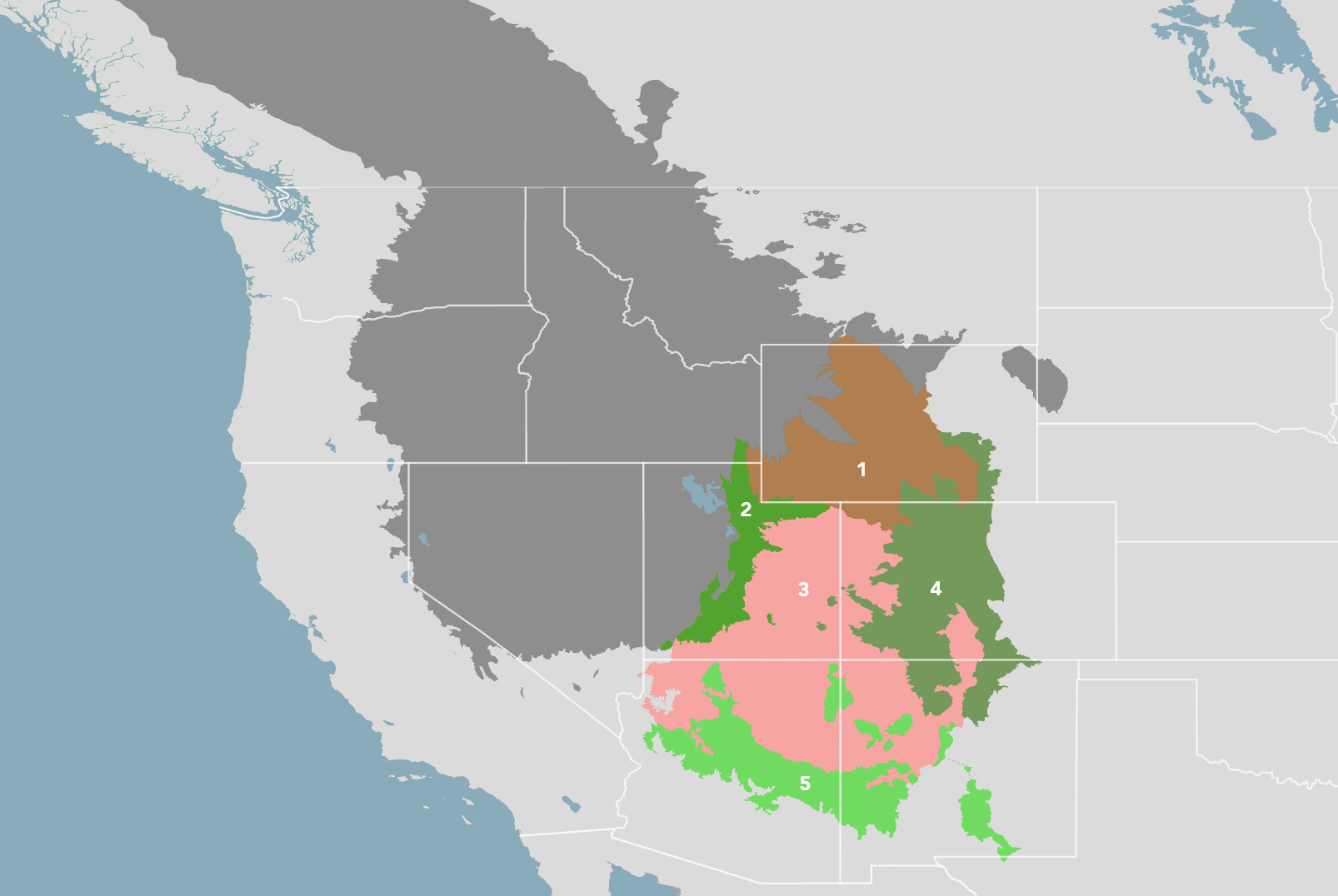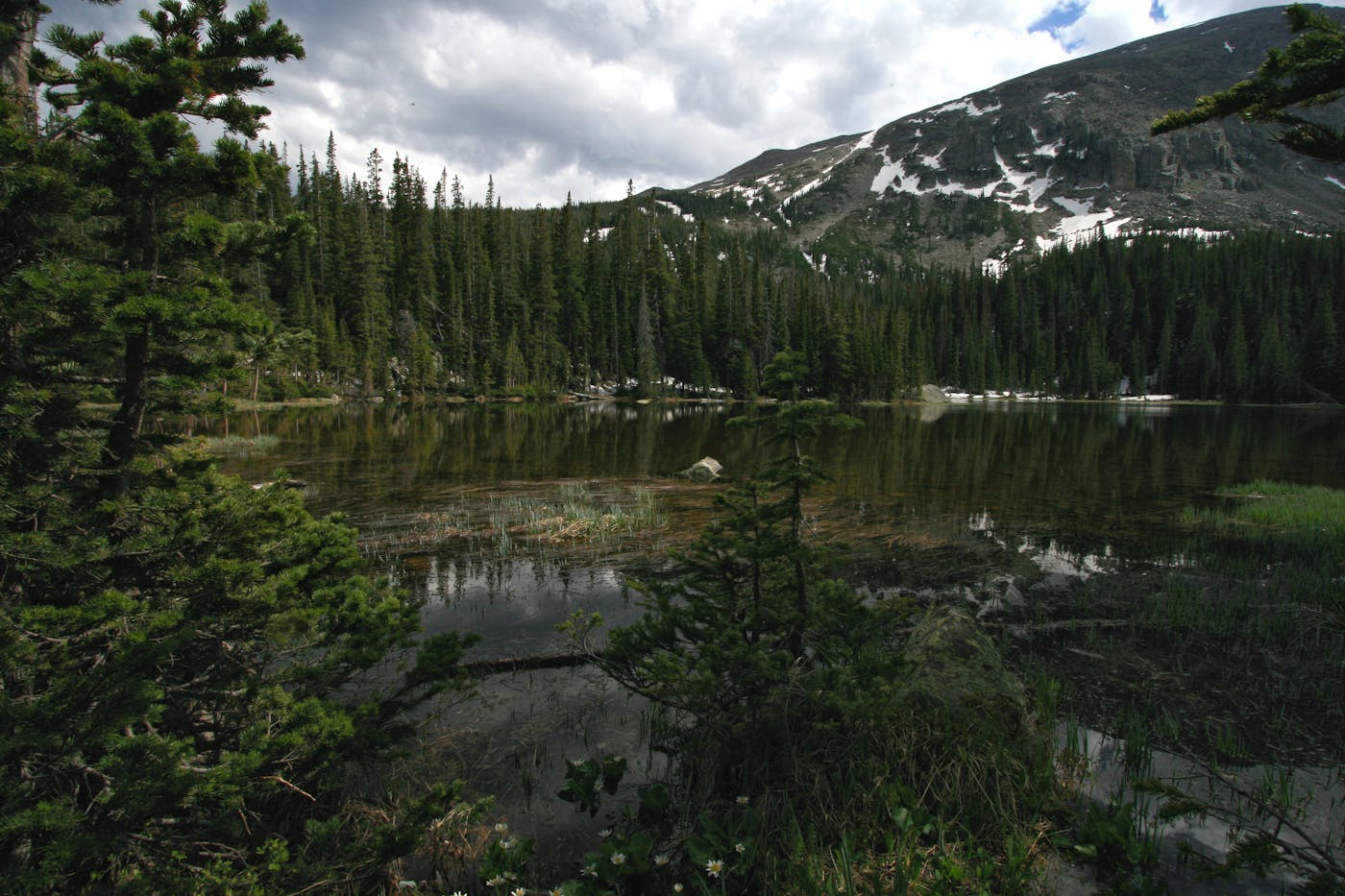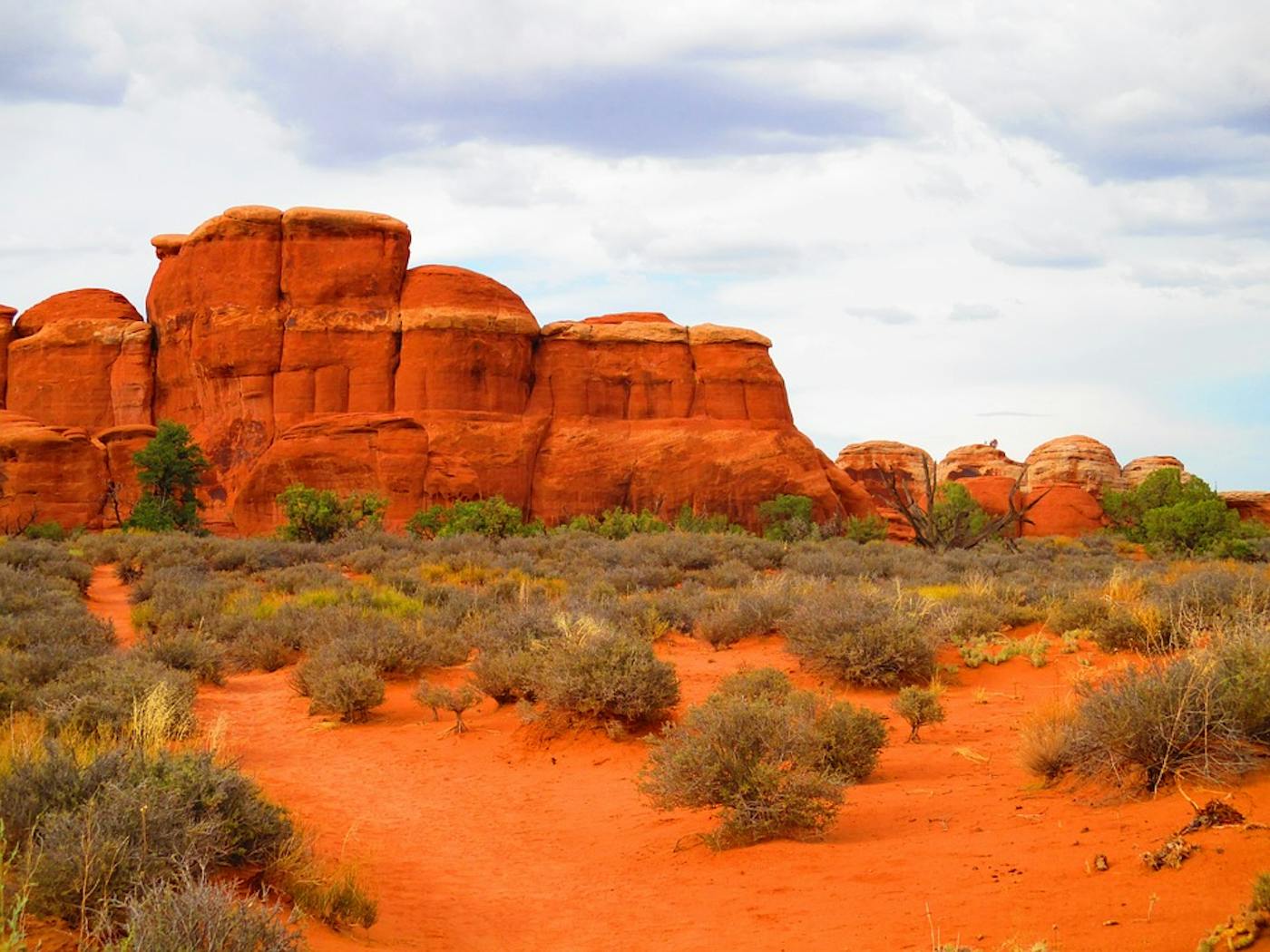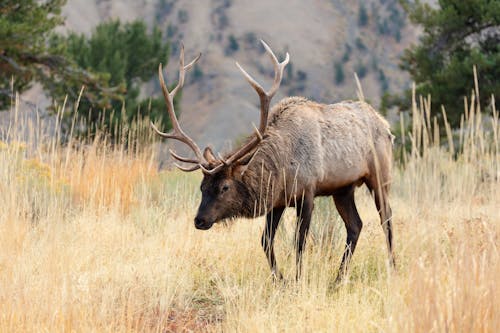Colorado Plateau & Mountain Forests bioregion
The bioregion’s land area is provided in units of 1,000 hectares. The conservation target is the combined Global Safety Net (GSN1) areas for the component ecoregions. The protection level indicates the percentage of the GSN goal that is currently protected on a scale of 0-10. N/A means data is not available at this time.
The Colorado Plateau bioregion, located in the American West subrealm of Northern America, is encircled by mountains on all sides and consists primarily of desert shrublands and shrub-steppe, spanning from the Arizona Mountains in the south to northern Wyoming, where it abuts the Central Rockies. It contains five ecoregions–Arizona Mountains Forests (346), Colorado Rockies Forests (353), Wasatch and Uinta Montane Forests (368), Colorado Plateau Shrublands (429), Wyoming Basin Shrub Steppe (438)—and for over a thousand years has been home to many different Native American tribes. The total area of this bioregion is approximately 72 million hectares.

The Colorado Plateau & Mountain Forests bioregion is part of the American West subrealm and is made up of five ecoregions: (1) Wyoming Basin Shrub Steppe (2) Wasatch and Uinta Montane Forests (3) Colorado Plateau Shrublands (4) Colorado Rockies Forests (5) Arizona Mountains Forests.
Learn more about each of the Colorado Plateau & Mountain Forests ecoregions below.
Explore the Bioregions
Want to learn more about the fascinating species, diverse ecosystems, and natural wonders of the Earth? Click the button below to launch One Earth's interactive navigator and discover your Bioregion!
LAUNCH NAVIGATOR




